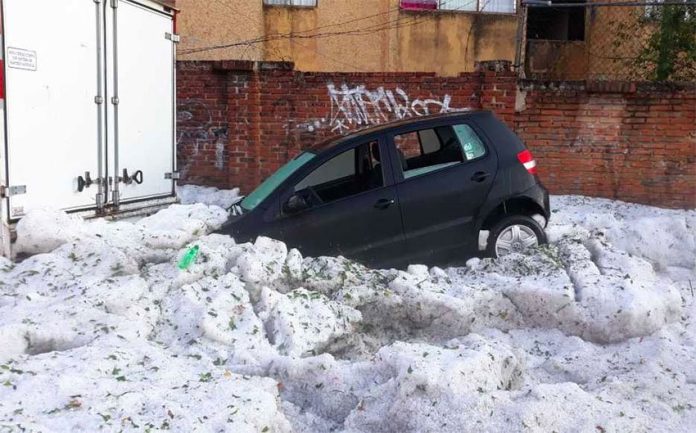After parts of Guadalajara were buried in hail more than a meter deep on Sunday morning, Jalisco Governor Enrique Alfaro was quick to point his finger at climate change.
“I was witness to scenes I’d never seen before,” Alfaro wrote on Twitter. “Hail more than a meter high, and then we wonder if climate change exists.”
But according to meteorologist and television weather presenter Abimael Salas, the heavy hailstorm is not necessarily a consequence of climate change.
Writing in the newspaper Milenio, Salas explained that while a hailstorms in the middle of summer might seem unusual, they are in fact common.
The meteorologist said that summer months – which in much of Mexico coincide with the rainy season – are more favorable for hailstorms because “very warm and humid air rises violently” and causes atmospheric instability.
Water vapor then turns into tiny drops of rain that together form cumulonimbus, or vertical, clouds, Salas wrote.
As time passes, the droplets significantly increase in size and reach altitudes where the temperature is below 0 C, causing them to freeze within the cloud, where there are strong currents that force the newly-formed hail to either ascend or descend, he explained.
Descending hail comes into contact with “very cold water,” which causes it to again increase in size until “eventually air currents cannot hold it and it falls towards the surface” of the Earth, Salas said.
“The quantity and size [of the hail] varies considerably depending on the humidity and the degree of atmospheric instability,” he wrote.
In the case of Guadalajara, the meteorologist said that high humidity and high temperatures on Saturday, the city’s altitude – it’s more than 1,500 meters above sea level – and a low-pressure system that brought colder than usual air to the atmosphere combined to “considerably heighten atmospheric instability” and create favorable conditions for the formation of large quantities of hail.
Salas said the storm clouds also “generated intense rain that caused significant water streams, which due to the urban design of the area, dragged hail towards the lowest parts [of the city], where large quantities of ice accumulated.”
He added: “In phenomena as extreme as this, we’re tempted to exclusively blame climate change. However, that cannot be applied [solely] to [this] particular phenomenon – poor urban planning also has an influence.”
“As temperatures increase globally, the energy available in the atmosphere increases and [to that] we add the excessive growth of the population and large urban centers, many of which are located in areas of risk,” Salas wrote.
“Material damage and losses of human life tend to increase even though alert systems and meteorological forecasts improve as [has occurred] in recent years.”
Source: Milenio (sp)
